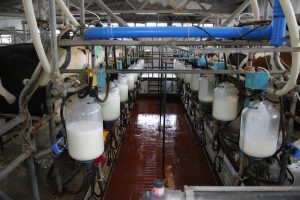From Jim Mulhern, President and CEO, NMPF

Mulhern
“It’s absurd for the Canadian government to assert there is no relationship between its new Class 7 policy and the lost U.S. milk sales there. When customers in Canada, who have been purchasing milk products from American suppliers for years, suddenly decide to switch to domestic suppliers after Canada implements a major change in milk pricing, it is abundantly clear that the lost business incurred by U.S. farmers is directly tied to Canada’s milk pricing system.
“The problems this pricing policy are creating for dairy farmers in Wisconsin, New York and Minnesota are real, and they have nothing to do with U.S. ‘overproduction,’ as alleged in a recent letter from Canada’s Ambassador to the United States, David MacNaughton. U.S. companies had, until recently, supplied Canadian customers during periods of relatively tight supplies and when production increased. The only change has been Canada’s deliberate pricing policy decision – starting last year in Ontario and spreading more recently to other provinces – to create a national ingredients strategy to undercut competition from the United States. Canada didn’t like U.S. farmers supplying their processors’ demand for milk proteins, so they changed the rules of the game. First they moved to block our exports and, even more problematic, their new pricing strategy is positioning them to further undercut global powder markets by dumping their surplus on the world market.
 “This situation is not just a bilateral trade problem for the United States. Canada’s policy change to manipulate internal prices to export more dairy ingredients globally is of great concern to other nations beyond just the United States. That’s why countries including Australia and New Zealand have also raised objections to Canada’s harmful actions.
“This situation is not just a bilateral trade problem for the United States. Canada’s policy change to manipulate internal prices to export more dairy ingredients globally is of great concern to other nations beyond just the United States. That’s why countries including Australia and New Zealand have also raised objections to Canada’s harmful actions.
“Canada’s effort to shift the focus away from the internal problems their milk pricing system is disingenuous at best. Canada can support its industry without intentionally using policy tools to harm U.S. dairy farmers and world dairy markets.”
Share this Post










